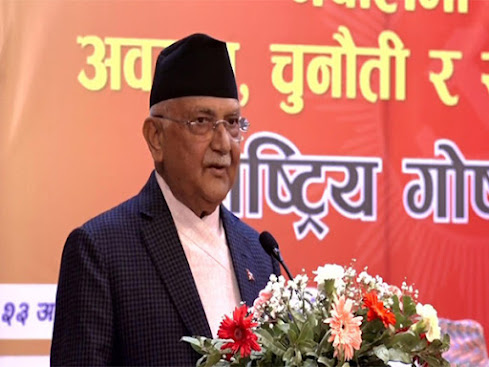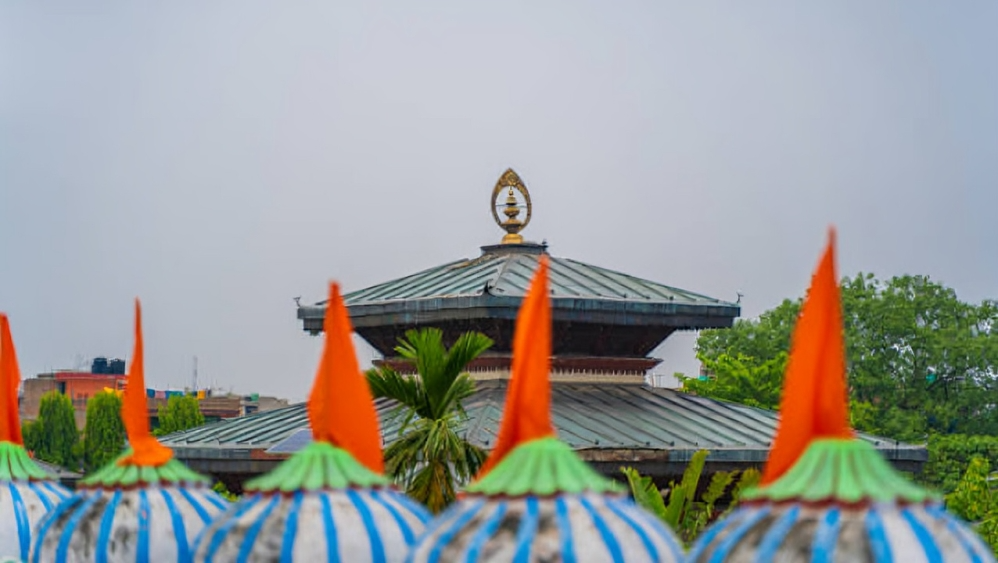Ram Birthplace in Nepal Claim was reignited on Monday as Nepal Prime Minister KP Sharma Oli once again asserted that Lord Ram was born in Nepal, not India. Speaking at a party-organized event in Kathmandu, Oli backed his claim with references to the original Ramayana written by sage Valmiki, urging citizens not to hesitate in promoting the idea.
This is not the first time that Oli has made the Ram Birthplace in Nepal Claim, but the boldness and consistency with which he continues to push the narrative have drawn both domestic and international attention.
PM Oli Cites Valmiki Ramayana in Ram Birthplace in Nepal Claim
While addressing a function by CPN-UML’s Tourism and Civil Aviation Department, PM Oli said:
“We talk about tourism. But how can someone just make a story about Ram being born somewhere else, specifying the place? Ram was born in Nepal. It is in Nepalese territory; that place now lies in Nepal.”
Oli acknowledged that the geography may have changed over time, but insisted that the current territory that lies in Nepal includes the real birthplace of Ram, referring indirectly to locations in Sunsari district. The Ram Birthplace in Nepal Claim was accompanied by other assertions. Oli claimed that Shiva and Vishwamitra are also from Nepal, again citing Balmiki’s Ramayana:
“Shiva is from here, Vishwamitra is from here. It’s not me saying this—it’s in the Ramayana. Vishwamitra says Ram crossed the Koshi River and taught Lakshmana.”
Oli added that Vishwamitra’s origins lie in Chatara, which now lies in Nepal’s Sunsari district.
2020 Flashback: Ram Janmabhoomi in Thori, Says Oli
This Ram Birthplace in Nepal Claim isn’t new. In July 2020, PM Oli stirred a major controversy by stating that ancient Ayodhya lies in Thori, Chitwan (Nepal), and he even ordered the construction of a Ram temple there.
“Dasharath’s son Ram was not an Indian, and Ayodhya is also in Nepal,” Oli had said, questioning how Ram could have travelled from present-day Ayodhya (India) to Janakpur for marriage without telecommunication infrastructure at that time.

Nepal Prime Minister KP Sharma Oli (Photo/ANI)
This earlier statement led to severe backlash, both within Nepal and from religious groups in India, causing Nepal’s Foreign Ministry to later issue clarifications.
Oli Sent Ram-Sita Idols to Thori Temple
To reinforce his Ram Birthplace in Nepal Claim, PM Oli also sent idols of Lord Ram and Sita to be installed in the under-construction temple in Thori, weeks before the controversial remarks in 2020. Despite opposition from various political and religious quarters, Oli has continued promoting the idea, citing it as a part of Nepal’s cultural heritage and Ramayana’s original geographical references.
While PM Oli remains adamant on the Ram Birthplace in Nepal Claim, members of Nepal’s ruling Communist Party and opposition have accused him of mixing religion and politics, potentially harming Nepal’s foreign relations, especially with India.
The claim also reopens age-old cultural disputes, particularly when Ayodhya in Uttar Pradesh, India is traditionally accepted and revered as Ram Janmabhoomi by millions of Hindus.
What’s Next for the Ram Birthplace in Nepal Claim?
With Oli continuing to emphasize Nepal’s connection to Hindu mythology, and making Ram Birthplace in Nepal Claim a key part of national identity, more cultural, historical and diplomatic debates are expected in the coming months.
Whether this statement leads to international dialogue or domestic political backlash, the Ram Birthplace in Nepal Claim is likely to remain a hot-button issue in South Asian discourse on religion, history, and geopolitics.
Erasmus+ Scholarships 2025: 101 Indian Students Win Prestigious Awards for Study in Europe

